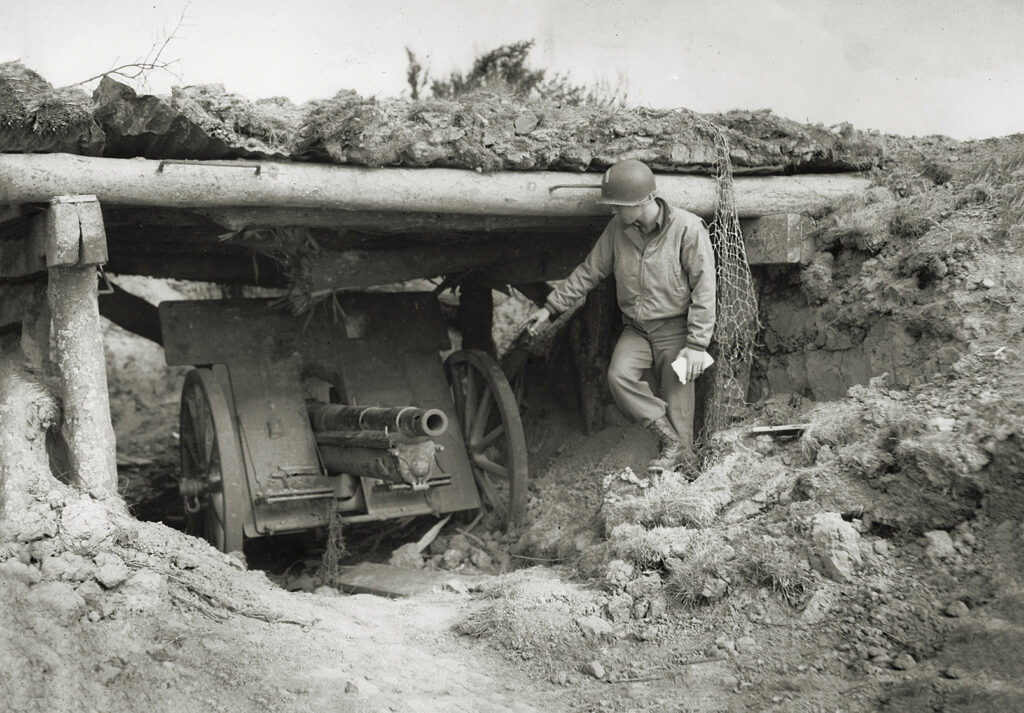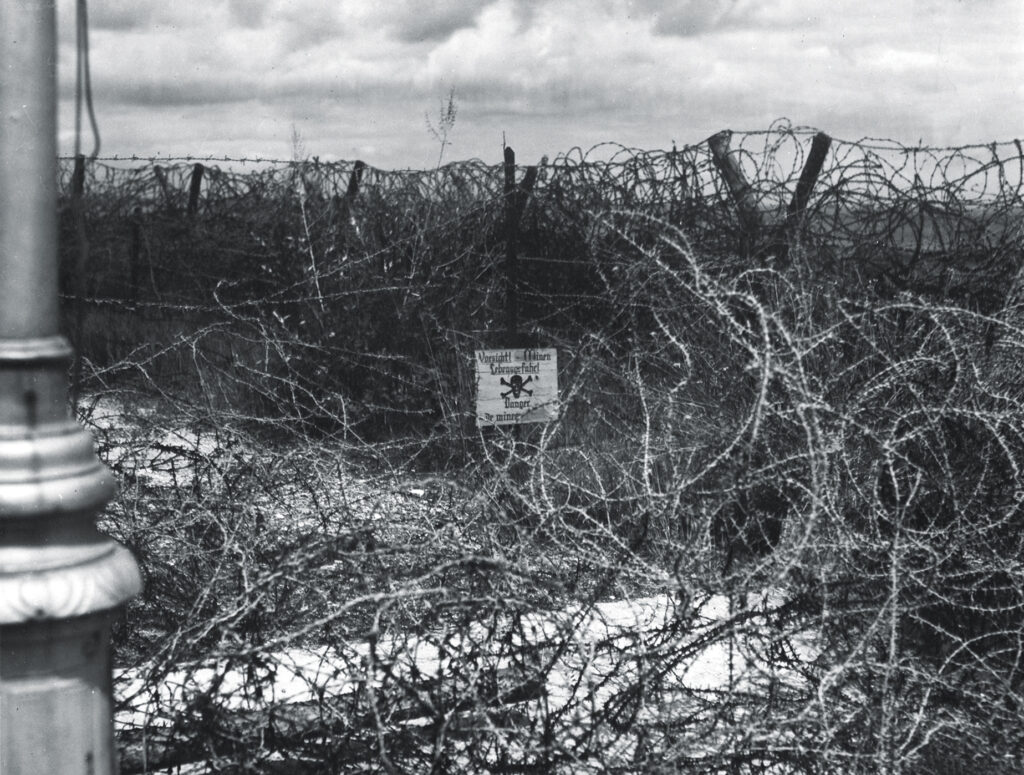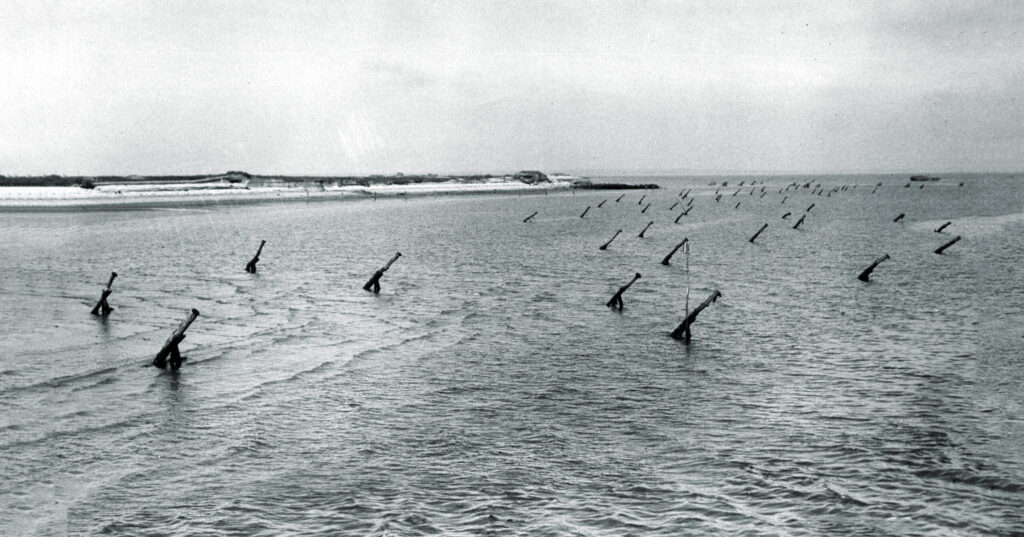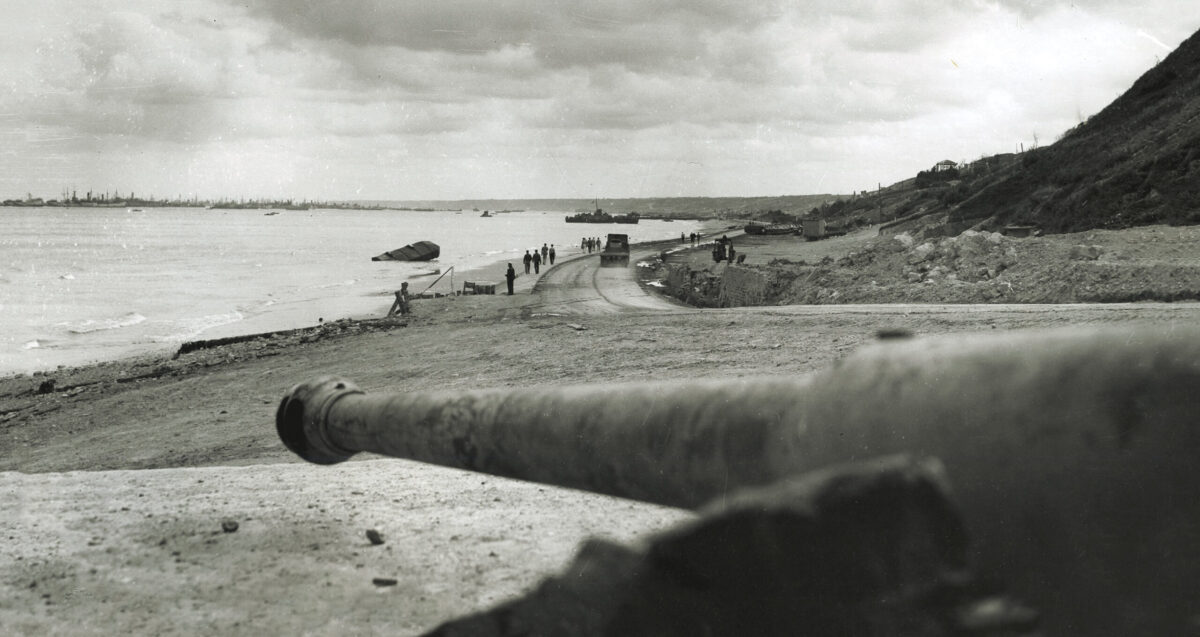It’s easy to take the World War II Allied victory on D-Day for granted somewhat—the concept of an invincible wave of Allied soldiers trampling over desperate troops of defending Germans is steadily becoming embedded in popular history. We are now so far removed from those events that victory may seem to us to have been a foregone conclusion. But can we truly appreciate the human cost of that victory—the horrors that Allied troops had to overcome to secure those beaches, the savagery of the battle against strong and tenacious defenders, and the staggering loss of life that ensued?
Those are the questions that Ernie Pyle, speaking to us from the annals of history, seems to ask us in this heartrending account of his impressions of the D-Day invasion. He described the following scenes because, he wrote, “I want you to know so that you can know and appreciate and forever be humbly grateful to those both dead and alive who did it for you.” As those who fought in World War II pass on, let us take his words to heart. We can reflect on what Allied soldiers fought and died for as we envision the grim reality he describes below.
Who Was Ernie Pyle?
World War II Pulitzer Prize-winning correspondent, Ernie Pyle (1900-1945), was America’s most famous combat reporter of the war, his columns carried in 700 daily and weekly newspapers across the U.S. Universally beloved by the G.I.s whose stories he faithfully reported to the folks back home, Pyle lived amongst them, sharing their meager rations, dodging enemy bullets and shellfire, and enduring the troops’ collective misery.
After a stint in London covering the Battle of Britain in 1940, Pyle returned to the European Theater in 1942 as a Scripps-Howard newspaper correspondent when the Allies invaded North Africa. He accompanied G.I.s as they fought to capture Sicily in 1943 and then slogged with them up the rugged terrain in Italy in 1944. Pyle’s most famous column, written during the Italian campaign, is “This One is Captain Waskow,” a poignant account published Jan. 10, 1944 of infantrymen’s reactions to the Dec. 14, 1943 death of their much-admired company commander, Capt. Henry T. Waskow, during the Battle of San Pietro. In April 1944, Pyle left Italy for England as one of 28 war correspondents to accompany American forces in the Normandy invasion. In January 1945, Pyle went to the Pacific Theater to report the war against Japan that America’s soldiers, sailors and Marines had been fighting since December 1941. By then, Pyle was on the verge of being emotionally exhausted from the strain of combat but persevered, covering the invasion of Okinawa. On April 18, 1945, while accompanying the Army infantrymen of the 305th Infantry Regiment, 77th Infantry Division as they cleared the tiny island of Ie Shima (today Iejima) just off the northwestern coast of Okinawa, the jeep carrying Pyle came under Japanese machine gun fire. After taking cover in a ditch, Pyle raised his head slightly as another burst of Japanese fire raked the road. Ernie was hit in the left temple, dying instantly. As a tribute to Pyle, the division’s soldiers erected a monument at the spot which reads: “At this spot, the 77th Infantry Division lost a buddy, Ernie Pyle.” He was eventually buried in Hawaii’s National Memorial Cemetery of the Pacific at Punchbowl Crater in Honolulu.
A Walk Across Omaha Beach
Ten months before his death on Ie Shima, however, on the night of June 5-6, 1944, Pyle crossed the English Channel amidst the vast Allied Normandy Invasion fleet, arriving off Omaha Beach on D-Day. Due to the intense struggle to capture the beachhead, Pyle and his fellow war correspondents had to wait offshore until permitted to land on Omaha on June 7, 1944—D-Day plus 1. His account here of what he saw there is taken from his 1944 book, Brave Men.
While you might think that Pyle’s late arrival on Omaha Beach was a drawback, it resulted in one of the most powerful passages describing World War II. Pyle tells the story of the thunderous clash of nations that occurred on D-Day by revealing objects that he saw on the beach—enemy obstacles and fortifications, equipment and soldiers’ personal belongings.
Even after all these years, Pyle’s writing allows us to hear the sheer silence of Omaha Beach. We can feel the magnitude of devastation—and witness the quiet heartbreak of many thousands of people embodied in the personal effects of men whose lives were extinguished as they came ashore.
“And Yet We Got On…”
Owing to a last-minute alteration in the arrangements, I didn’t arrive on the beachhead until the morning after D-Day, after our first wave of assault troops had hit the shore…After it was over it seemed to me a pure miracle that we ever took the beach at all…
I want to tell you what the opening of the Second Front in one sector entailed, so that you can know and appreciate and forever be humbly grateful to those both dead and alive who did it for you. Ashore, facing us, were more enemy troops than we had in our assault waves.

The advantages were all theirs, the disadvantages all ours. The Germans were dug into positions they had been working on for months… They could shoot parallel with the shore and cover every foot of it for miles with artillery fire. Then they had hidden machine-gun nests on the forward slopes, with crossfire taking in every inch of the beach…
Our only exits from the beach were several swales or valleys… The Germans made the most of those funnellike traps, sowing them with buried mines… All this was on the shore. But our men had to go through a maze nearly as deadly before they even got ashore. Underwater obstacles were terrific. Under the water the Germans had whole fields of evil devices to catch our boats. Several days after the landing we had cleared only channels through them and still could not approach the whole length of the beach with our ships…
The Germans had masses of great six-pronged spiders—made of railroad iron and standing shoulder-high—just beneath the surface of the water, for our landing craft to run into. They had huge logs buried in the sand, pointing upward and outward, their tops just below the water. Attached to the logs were mines. In addition to these obstacles, they had floating mines offshore, land mines buried in the sand of the beach, and more mines in the checkerboard rows in the tall grass beyond the sand…And yet we got on.

I took a walk along the historic coast of Normandy in the country of France. It was a lovely day for strolling along the seashore. Men were sleeping on the sand, some of them sleeping forever. Men were floating in the water, but they didn’t know they were in the water, for they were dead…
I walked for a mile and a half along the water’s edge of our many-miled invasion beach. I walked slowly, for the detail on that beach was infinite. The wreckage was vast and startling. The awful waste and destruction of war, even aside from the loss of human life, has always been one of its outstanding features to those who are in it… For a mile out from the beach there were scores of tanks and trucks and boats that were not visible, for they were at the bottom of the water—swamped by overloading, or hit by shells, or sunk by mines. Most of their crews were lost. There were trucks tipped half over and swamped, partly sunken barges, and the angled-up corners of jeeps, and the small landing craft half submerged. And at low tide you could still see those vicious six-pronged iron snares that helped snag and wreck them.
The Things They Left In the Sand
On the beach itself, high and dry, were all kinds of wrecked vehicles. There were tanks that had only just made the beach before being knocked out… In this shoreline museum of carnage there were abandoned rolls of barbed wire and smashed bulldozers and big stacks of thrown-away life belts and piles of shells still waiting to be moved. In the water floated empty life rafts and soldiers’ packs and ration boxes, and mysterious oranges… On the beach lay, expended, sufficient men and mechanism for a small war. They were gone forever now. And yet we could afford it. We could afford it because we were on, we had our toehold, and behind us there were such enormous replacements for this wreckage on the beach that you could hardly conceive of the sum total.
Men and equipment were flowing from England in such a gigantic stream that it made the waste on the beachhead seem like nothing at all, really nothing at all.
But there was another and more human litter. It extended in a thin little line, just like a high-water mark, for miles along the beach. This was the strewn personal gear, gear that would never be needed again by those who fought and died to give us our entrance into Europe.

There in a jumbled row for mile on mile were soldiers’ packs. There were socks and shoe polish, sewing kits, diaries, Bibles, hand grenades. There were the latest letters from home, with the address on each one neatly razored out—one of the security precautions enforced before the boys embarked.
There were toothbrushes and razors, and snapshots of families back home staring up at you from the sand. There were pocketbooks, metal mirrors, extra trousers, and bloody, abandoned shoes…There were torn pistol belts and canvas water buckets, first-aid kits, and jumbled heaps of life belts. I picked up a pocket Bible with a soldier’s name in it, and put it in my jacket. I carried it half a mile or so and then put it back down on the beach. I don’t know why I picked it up, or why I put it down again.
Soldiers carry strange things ashore with them… The most ironic piece of equipment marking our beach—this beach first of despair, then of victory—was a tennis racket that some soldier had brought along. It lay lonesomely on the sand, clamped in a press, not a string broken.
Two of the most dominant items in the beach refuse were cigarettes and writing paper. Each soldier was issued a carton of cigarettes just before he started. That day those cartons by the thousand, water-soaked and spilled out, marked the line of our first savage blow.
From Brave Men by Ernie Pyle, published by Penguin Classics, an imprint of Penguin Publishing Group, a division of Penguin Random House, LLC. Copyright © 1943, 1944 by Scripps-Howard Newspaper Alliance. Copyright © 1944 by Henry Holt & Company, Inc. Copyright renewed 1972 by Holt, Rinehart & Winston, Inc.”






